What Patients Can Expect
When chronic shoulder pain begins to interfere with daily life, and treatments like rest, physical therapy, or medication fall short, it’s natural to start looking for something more targeted—and barbotage often becomes a top contender. Known for its ability to tackle calcific tendonitis with minimal downtime, this procedure has helped countless patients regain comfort and motion in their shoulders.
In this guide, we’ll walk through the real-world benefits of barbotage—starting from the immediate relief it can provide, to the long-term health improvements it supports.
What Happens During Barbotage?
Just to recap: barbotage is a minimally invasive procedure where a calcium deposit in the rotator cuff tendon is flushed and aspirated using a fine needle under ultrasound guidance. Often performed by a shoulder specialist, it allows the physician to directly remove the painful deposit and reduce inflammation.
Immediate Benefits of Barbotage
1. Targeted Pain Relief
Within just a few days of the procedure, most patients experience a dramatic drop in pain levels, especially during overhead activities or while sleeping on the affected side. That’s because the primary irritant—calcium buildup—has been physically removed or significantly reduced.
2. No Need for General Anesthesia
Barbotage is performed using local anesthesia, so patients remain awake and avoid the risks associated with sedation or surgery. It’s a short outpatient procedure, making it suitable for those who prefer a less invasive path.
3. Quick Recovery Time
Most people return to work and light activity within 24–48 hours. There may be mild soreness, but nothing that typically interferes with daily life. Compared to the 6–12 week recovery of surgical interventions, barbotage offers an impressively short turnaround.
4. Reduced Need for Medication
By removing the deposit directly, barbotage often eliminates the need for prolonged NSAID use or repeated steroid injections. That’s good news for patients who are sensitive to these medications or who prefer to avoid long-term drug use.
Long-Term Benefits of Barbotage
1. Improved Shoulder Mobility
Calcific deposits not only cause pain—they can also block smooth tendon movement, limiting range of motion. By clearing the obstruction, barbotage helps restore natural shoulder movement, particularly in actions like reaching overhead or behind the back.
2. Lasting Relief from Calcific Tendonitis
Studies and case series have shown that a single barbotage session can offer long-term relief, with many patients remaining symptom-free for years. Recurrence is relatively uncommon when post-procedure care and rehabilitation are followed.
3. Avoidance of Surgery
For many patients, barbotage prevents the need for arthroscopic surgery. By achieving similar outcomes through a needle-based procedure, patients can avoid hospital stays, sutures, and longer recovery timelines.
4. Preservation of Tendon Integrity
Unlike surgical approaches, barbotage does not cut into tendons or require sutures. This means the tendon structure is preserved, reducing the risk of complications such as tendon rupture or excessive scar tissue formation.
5. Better Long-Term Shoulder Health
Barbotage not only treats the immediate problem—it can also lead to healthier movement patterns and reduced compensatory strain on other muscles and joints. That means fewer issues down the line in the neck, upper back, or opposite shoulder.
What Should Patients Expect?
Short-Term Timeline:
- 0–48 hours: Mild soreness, rest, cold compress use
- 3–5 days: Noticeable pain relief, light activity resumed
- 2 weeks: Significant reduction in stiffness and inflammation
- 4–6 weeks: Near-complete return to full shoulder function
Long-Term Outlook:
- Improved range of motion
- Fewer flare-ups of calcific tendonitis
- Lower risk of needing more invasive procedures
Important Notes on Outcomes
While most patients respond positively, a small number may experience:
- Residual calcification (not always symptomatic)
- Temporary post-procedure stiffness
- Need for physical therapy to maximize motion recovery
Success often depends on:
- Size and density of the deposit
- Skill of the specialist
- Patient adherence to post-procedure care
Barbotage represents the best of modern orthopedic care—minimally invasive, highly targeted, and effective. For patients with calcific tendonitis of the shoulder, it offers not just a way out of pain, but a clear path back to comfort, function, and normal life.
Whether you’re an office worker, athlete, or someone simply looking to sleep without shoulder pain again, barbotage is worth discussing with your shoulder specialist.
FAQs: What Patients Want to Know
1. How long before I feel better after barbotage?
Most patients feel significantly better within a week, with continued improvement over 4–6 weeks.
2. Will the calcium come back?
Recurrence is rare, especially if the underlying cause (overuse, posture, etc.) is addressed.
3. Is physical therapy needed after the procedure?
Often yes. Light therapy helps restore full motion and prevent stiffness.
4. Does insurance usually cover barbotage?
In many cases, yes—especially when it’s deemed medically necessary after failed conservative treatments.
5. Are there risks involved?
Risks are minimal but can include soreness, bruising, or incomplete deposit removal. Serious complications are rare.
